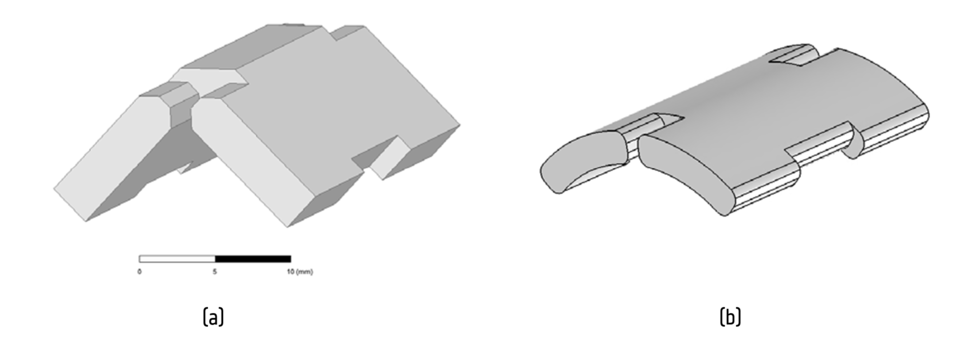Compact Feed System with Developable Waveguide H-plane Directional Coupler
| 782 - Abstract: |
| The present invention relates to a novel H-plane coupler, referred to as a rooftop coupler, and more generally as a developable coupler, enabling new or improved microwave devices. The coupler is obtained as a H-plane coupler mapped onto a developable surface, such that the main electric field direction in the two coupled waveguide transmission lines are not parallel, providing a very compact and light solution. ESA is looking for partners who would be interested in getting a license and implementing this patent. |
Description:
Currently, all existing waveguide feed systems in SATCOM reflector antennas are the aggregation of various well-known components designed as stand-alone elements. This restricts the minimum achievable volume. The current state-of-the-art in Europe for broadband dual-band dual-polarisation K/Ka feed systems of interest for SATCOM payloads, including very high throughput satellite (VHTS) multiple beam antenna systems impose a feed spacing of 30 mm or larger, which may result in (too) large satellite antennas or significant performance degradation due to e.g., high grating lobes within the field of view. Future payloads, including ultra-high throughput satellite (UHTS) with higher spectral density, would benefit from smaller feeds, and in particular feeds with a reduced footprint in the focal plane, without compromising its length.
The very compact design introduced with this invention is based on a co-design of the different feed components. This leads to the design of a developable H-plane coupler referred to as rooftop coupler, which is the key innovation, as well as an assembly of this component with the previously developed compact two-probe OMT (ESA PAT 747) and an in-line filter design. The solution developed fits in a lattice of only 20 mm, which corresponds to a reduction in volume by a factor of two compared to prior art when implemented using screwless assembly techniques.
In this H-plane coupler, the H-plane is mapped to a developable surface such as a cylinder or a parallelepiped. Two examples of developable couplers are reported in Fig. 1.
Combined with the two-probe OMT of ESA PAT 747, a very compact dual-band dual-polarisation design is obtained. An illustration of a possible design using the rooftop coupler design and an OMT with a square cross-section is reported in Fig. 2. The OMT extracts the lower frequency band through the two orthogonal coupling probes, while the higher frequency propagates through the common waveguide towards a septum polarizer with reduced cross-section, thus providing below cut-off frequency filtering of the lower frequency band. Another critical aspect of the design is the overall layout of the feed system, which benefits from an in-line filter design (combining stubs and irises) for minimum volume.
The main idea behind this component is to have it to conform along the longitudinal direction to the common waveguide generally used in dual-polarisation feed horn systems (e.g. circular or square waveguide). This way the overall volume of the feed system may be reduced by “wrapping” the coupler around the common waveguide.
Innovations and advantages:
- The main benefit of the invention is that it enables advanced microwave devices, either introducing new functionalities (e.g. 3D 8-port coupler obtained as a combination of two developable couplers) or improving over existing solutions (e.g. reduction of the volume by a factor of 2 of current state-of-the-art dual-band dual-polarisation feed systems).
- Compact: The reduction of the volume has some positive side effects, as this is expected to translate into reduced cost (less bulk material) and mass.
- This more compact feed system may also bring new functionalities (e.g. integrated Tx/Rx active antenna element).
Domain of application:
The concept has been developed for SATCOM applications but it can benefit various other applications, from Earth observation to science, as dual-polarization waveguide feeds are a common subsystem in satellite RF payloads.
Outside the space field, the invention may find applications in mm-wave terrestrial communication systems (e.g. 5G), high altitude platforms (e.g. balloons, atmospheric satellites) and measurement systems in the millimeter and sub-millimeter wave range (e.g. test facility probes, material characterization test bench).
IP Status
An International patent application (PCT) has been filed.



